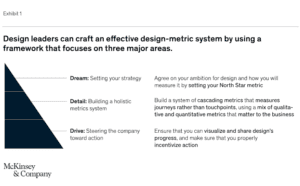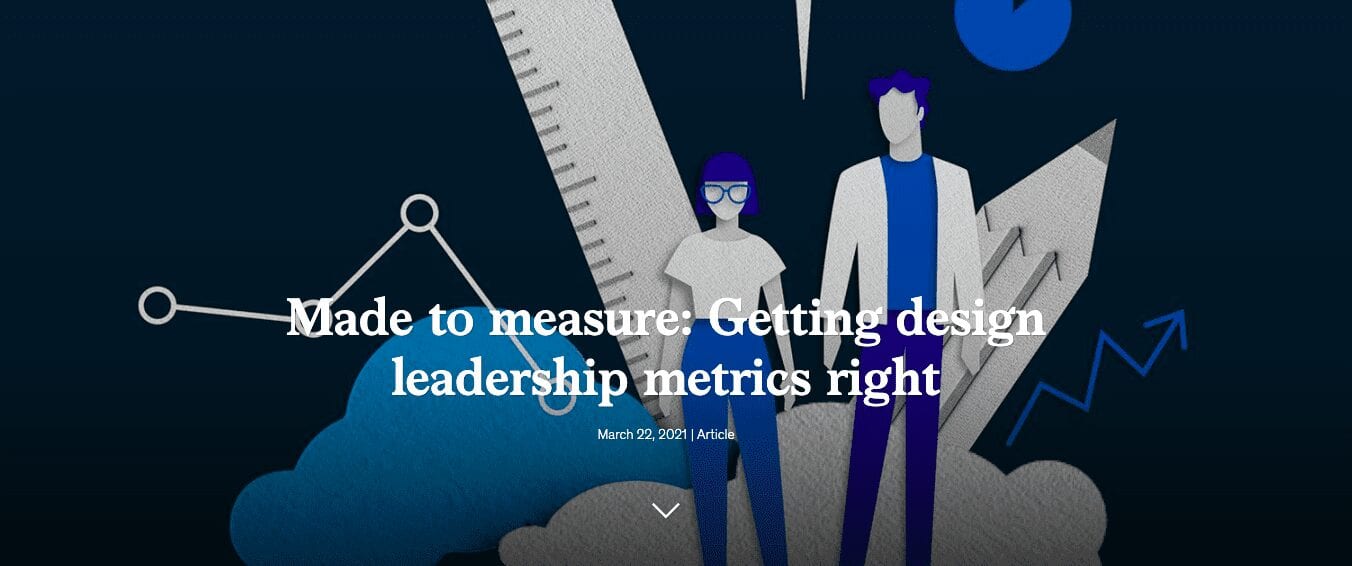Last year we posed a simple question to organizations: “Are you asking enough from your design leaders?” It’s an important question given that companies excelling in design grow revenues and shareholder returns at nearly twice the rate of their industry peers. Moreover, in these ruptured times, companies with a human-centered approach can better navigate and respond to the seismic shifts taking place in how we live, shop, and work as a result of the COVID-19 pandemic.
However, the results of our survey were, quite frankly, a bit dismal: only 10 percent of respondents reported realizing design’s full potential, a result driven primarily by a lack of clarity as to how design leaders can contribute and uncertainty about what to expect of them in their role.
Previously, we wrote about several interconnected interventions that can help elevate design’s performance and role in an organization. One has sparked more debate than the rest: the use of design metrics.
To be sure, design-related metrics are challenging to get right. They require a balance of empathy, qualitative insights, and quantitative awareness. It’s the last of these that has proven thorny to many, particularly when tying quantitative customer insights to financial performance and business actions. It is the ability to link design to value, however, that can unlock design’s strategic potential.
When crafted correctly, design metrics can give leaders accurate readings into the health and performance of a design organization so they can steer it effectively. One software company with well-built design metrics can now estimate its future revenues from new software releases, enabling staff to precisely target the design elements that will increase adoption and, ultimately, revenue.
Growing recognition from the C-suite of the impact unique, human-centered insights can have on the company’s bottom line means that design leaders will face increasing demand for them. As one medtech CEO put it, “If I don’t have robust data on whether my products are improving the lives and outcomes for my patients—and doing so better than my competitors—then shame on me.”
But how does a design leader get metrics right? In our experience, there are eight actions that design leaders can take to both capture the right metrics and elevate their use across the organization to maximize design’s impact. Taking inspiration from better-known 3D frameworks, we think of these activities as falling into three phases: Dream, or setting your strategy; Detail, or identifying the key performance indicators (KPIs); and Drive, or steering the company toward action (Exhibit 1).



